Inside Pure
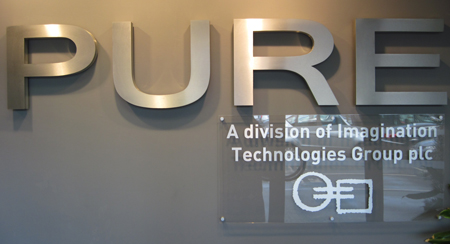
With the digital radio switchover continuning to cause heated debate – as we discovered first hand earlier this week – it seemed a good time to make a visit to Pure, the UK-based market leader in digital radios.
It was a trip that taught us a lot, including how Pure's parent company is supplying Apple, Samsung plus a host of Pure's DAB rivals; the design, engineering and good old-fashioned listening going on; and fascinating insights into internet radio usage...
Imagine that
Both Pure and its parent company, Imagination Technologies – of which more later – are based in Kings Langley, Hertfordshire, on a site that's currently being expanded and updated along with the firm's ambitions.
Pure has 140 staff, including 90 engineers, and offices in Chepstow and Leeds, plus sales staff in France, Germany, Switzerland, Italy, Denmark, the US, and Australia.
There are additional development offices in India and China, plus a new R&D office in Poland.

Four basic designs
The latest hi-fi, home cinema and tech news, reviews, buying advice and deals, direct to your inbox.
The majority of Pure's design, development and testing is done here in Hertfordshire. Yes, it produces a vast array of radios (as displayed in the company's training room, above), but from the company's perspective it only has four core units: wooden radios, plastic radios, clock radios, and its internet-enabled 'Flow' products.
One of the company's engineers explains further: "take any Pure Flow product, such as the Evoke Flow: under the bonnet it's essentially a Linux computer on a chip. Once we've perfected that, it's just about different implementations of that core technology".
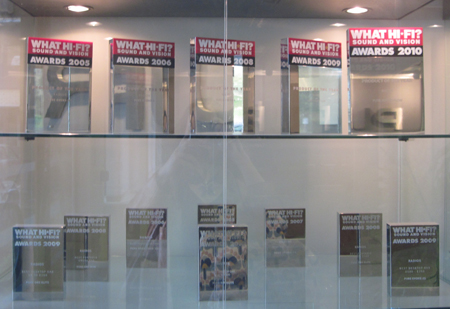
Micros in mind
But Pure has more on its mind at the moment than just four different kinds of radio. For starters, despite winning a host of What Hi-Fi? Sound and Vision Awards for many of its DAB designs – as it proudly displays in its reception area (see above) – the company has yet to produce a five-star DAB microsystem.
That's something it's tackling head on with this year's new Pure Sirocco 550, due by May, and priced at £350.
The micro is undergoing final testing in Pure's soundproofed listening rooms.
As you can see from the picture below, the forthcoming Sirocco (bottom right) is being benchmarked against rivals from Onkyo and Denon, including the Award-winning Denon D-M38DAB (top right).
Not quite sure we approve of that product stacking...

Just as with our DAB radio testing at What Hi-Fi? Sound and Vision, the company compares Pure prototypes against their rivals in the acoustically treated room, and also tries them out in the typical places they're likely to be used. That means in kitchens, offices, even bathrooms.
The only Pure radio not subjected to this comparative procedure was the Avanti Flow, as there was no rival for the internet/FM/DAB/iPod design at that stage. Still, that didn't turn out too bad for a product that one of the firm's top engineers tuned at home!
Back to the drawing board
These final testing days are the end of a long journey for the Sirocco 550 – one that started, as is the case with all Pure products, in the design department at Kings Langley.
The processing brain of each product is mapped out in detail: here are the initial drawings, with the actual circuit board on top.

The heart of each Pure product is the chip patented by parent company, Imagination Technologies, which essentially combines a digital radio and Class D amplification in a single processor.
This is then engineered into the wider design, complete with power supplies of Pure's own design.
It's this blend of technology that Pure believes sets it apart, despite sharing the core chip with many of its rivals (of which more later).
From software to hardware
Then onto computer-aided design (CAD) software, when the product – in this case the Pure Contour – begins to take shape.
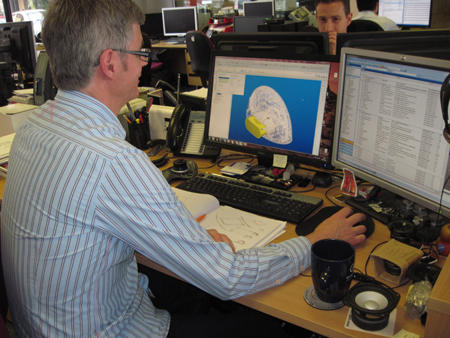
The CAD modelling then takes physical form in the shape of firstly foam models (below right) then early prototypes (below left).
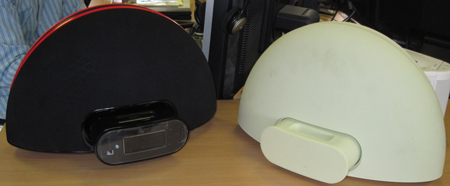
Several generations of prototype can be made, as shown by these evolutions of the Pure One Flow shown below.
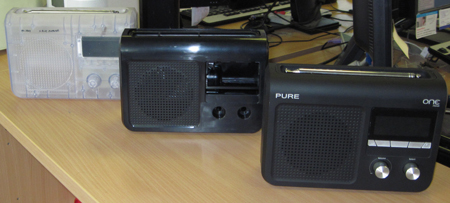
Meanwhile, base-level software is being engineered in Pure's Chepstow offices, with more software – including interfaces and firmware releases – coming out of Pure's team in India.
Testing, testing
Once a Pure product is ready for release, it's subject to a range of other tests, including environmental and radio frequency (RF) assessments.

For example, Pure expects its radios to work at temperatures ranging from -10 to 50 degrees C. The heat-testing unit pictured above allows Pure to test kit at such extremes: Dax is proud that they got an Evoke down to -40 degrees recently.
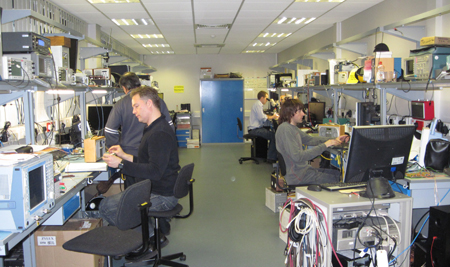
The engineers shown above are RF testing a range of Pure products.
Testing also involves the use of a room that's scarily familiar at audio companies around the world: an anechoic chamber. We say scary, because just a few seconds in these sound-reflection-free rooms is enough to turn anybody claustrophic (and if you're already a sufferer...avoid).
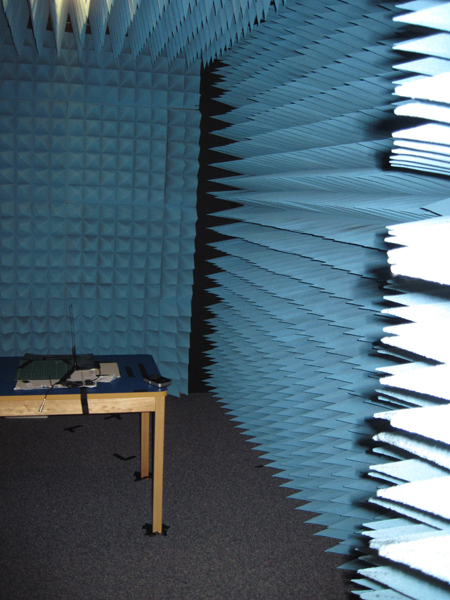
This is Radio Pure
Pure also does a lot of testing to gauge the sensitivity – plus, obviously, performance – of its radios with a range of broadcasts And it isn't just relying on random radio broadcasts for this testing: it runs its own DAB multiplex (via the stack shown below), which broadcasts four stations.
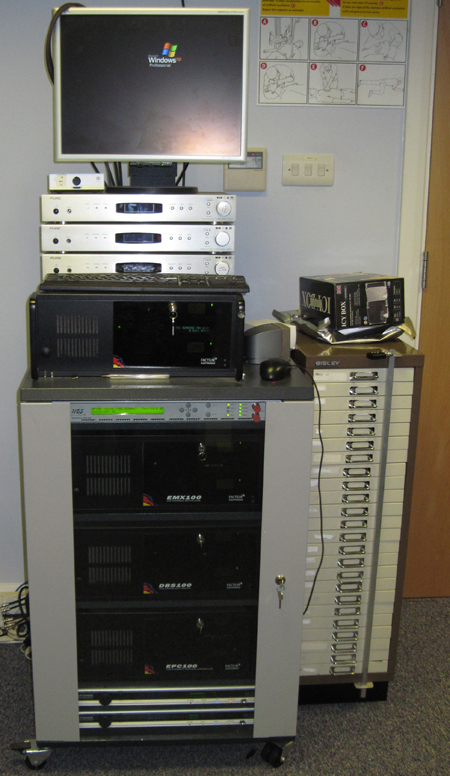
You won't be able to tune into Radio Pure 1, 2, 3 or 4 any time soon, however – "it's a limited, internal signal; we don't want to be pirates!", explains Dax.
Use your imagination
Having seen the products from design to final testing stage, we took a step back, via a trip over the road to the offices of Pure's parent company, Imagination Technologies.
An unsung hero of British engineering, Imagination Technologies produces chipsets that power some of the biggest names out there. It works across graphics, video, display, communication and processor technology.
Tony King-Smith, Imagination's VP of Marketing, estimates there are half a billion gadgets in the world with the company's chipsets in – including the Apple iPhone and iPad, Samsung's Galaxy S and 70 other smartphones.
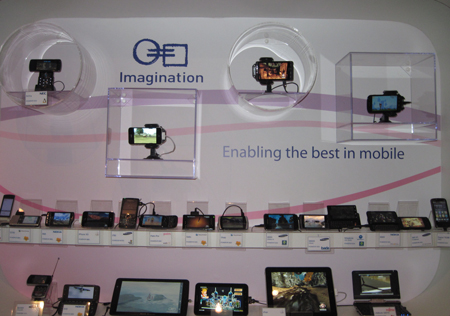
Imagination's latest graphics processor (GPU) is behind the extra turn of speed in the Apple iPad 2, and future designs will power the graphics in Sony's next-generation PlayStation.
Supercomputer in your pocket
Tony also predicts that smartphone GPUs will be capable of 200 Gigaflops of processing power within two years: "that's supercomputer power", he says.
Such graphics grunt will enable portable devices to handle Full HD-quality video as quickly and easily as they now do text and photos, he claims, all with low power consumption to preserve precious battery life.
Imagination is also doing a lot of work on glasses-free 3D for portable devices, interactive photo-realism on a range of devices (Sat-Nav; mobile phones) and augmented reailty.
The company is also involved in TV technology – both in terms of picture processing and also advanced graphical interfaces for set-top boxes – plus voice-over-IP.
Tony explains: "we're working on the consumer demand for wanting everything everywhere - making connected technology easy and fun to use".
Back to DAB

Imagination also sells its DAB chipsets beyond its Pure offshoot. As you can see from the array of radios above, it's supplying chips to Roberts and Vita Audio among others.
But why sell to your rivals? Tony explains: "Every Pure product has technology underpinning it that no-one else yet has access to. But we also provide tech to our competitors – we can drive the market forward".
Go with the Flow
One of those areas where Pure is aiming to lead is internet radio, providing not just access to online radio stations, but to a selection of services available to connected products.
Returning back to Pure's offices, we met up with Pete Downton, Director of Connected Services, to discuss how the company's FlowSongs service is faring since its launch last year.

To recap, FlowSongs – which works on Pure's Flow range – allows a simple way to identify then buy music you hear on your radio, whether you're listening to digital, FM or internet stations. It works by marrying the Shazam song-indentification technology and 7Digital's music download catalogue.
FlowSongs is still officially in beta, but Pete says it's proving really popular, with 10 percent of tagged songs being bought.
And it's not downloads of today's chart favourites that are driving the service, either: 80 percent of purchased tracks are more than a year old. Lots of long-lost favourites being re-discovered, it seems...
Pure is also analysing worldwide use of its Lounge internet radio/services portal to influence optimisation of products and services to different countries.
Live radio listening still dominates, but the popularity of BBC iPlayer and podcasts means UK Pure owners listen to more catch-up services than their global counterparts – though Australia runs us a close second on that, as it tunes into shows it missed in different timezones.
Keeping radio relevant
Pure will celebrate its 10th anniversary next year, but is already looking ahead to the next 10 years, as marketing director Colin Crawford explains:
"What will people want from a radio? Internet connecitvity is great for niche and on-demand content, but broadcast remains key. It all comes down to compelling content.
"If radio simply becomes App number 23 on a smartphone, it's a real loss", he concludes.
OK, so that smartphone will probably have an Imagination Technologies chipset in it, but we get his point.
